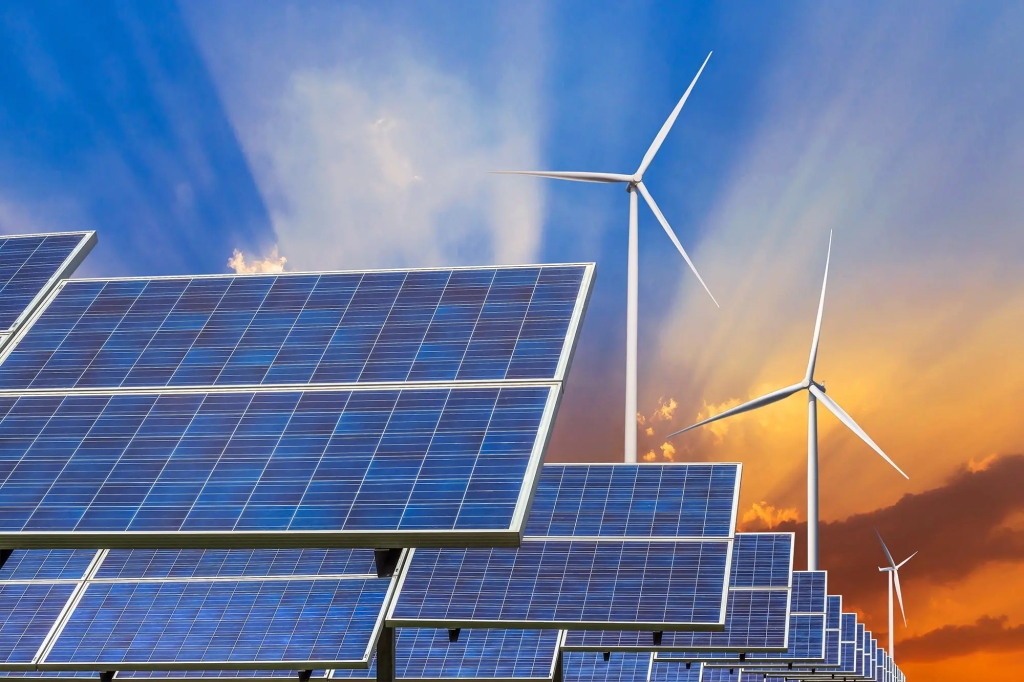Renewable Energy Sources: The Future is Bright (and Green)
In a world where climate change and environmental degradation are becoming increasingly pressing concerns, the need for sustainable energy sources has never been more crucial. Enter renewable energy – the shining beacon of hope in our quest to reduce greenhouse gas emissions and transition towards a cleaner, greener future.
Renewable energy sources harness the power of nature to generate electricity without depleting natural resources or polluting the environment. They offer an array of benefits, ranging from reducing our carbon footprint to creating new job opportunities. So let’s take a closer look at some of these remarkable alternatives.
Solar Power:
Ah, solar power – the epitome of clean energy! Harnessing the immense power of our nearest star, solar panels convert sunlight into electricity through photovoltaic cells. Not only can they be installed almost anywhere imaginable – rooftops, deserts, even outer space – but they also require minimal maintenance once set up.
Sure, critics may argue that solar panels are expensive and inefficient in certain weather conditions like cloudy days or during winter months. But fear not! Technological advancements have made tremendous leaps in recent years. We now have more efficient panels with higher conversion rates and battery storage solutions that allow us to use solar-generated electricity even after sunset.
Wind Power:
If you’ve ever stood near a wind turbine when it’s spinning at full speed, you’ll understand why wind power is such an exciting prospect for renewable energy enthusiasts. These majestic giants transform kinetic energy from the wind into electrical power using turbines.
Some naysayers claim that wind farms are eyesores on landscapes or disrupt bird migration patterns. However, these concerns pale in comparison to their colossal advantages. Wind turbines can generate substantial amounts of electricity while occupying relatively small land areas compared to conventional fossil fuel plants.
Hydropower:
Harnessing the sheer force of flowing water has long been one of humanity’s oldest tricks. From ancient waterwheels to modern hydroelectric dams, hydropower is a reliable and established renewable energy source.
Critics may argue that building large-scale dams disrupts ecosystems, displaces communities, and alters river flows. But let’s not forget the immense potential of smaller scale hydro systems such as run-of-the-river projects or tidal power generators. These alternatives minimize environmental impact while still generating clean electricity.
Geothermal Energy:
Beneath our feet lies an untapped source of energy – geothermal power. This renewable resource harnesses heat from the Earth’s core to generate electricity and provide heating/cooling solutions for buildings.
While it may seem like a far-fetched concept straight out of science fiction, geothermal energy is very much a reality today. Iceland stands as a shining example, with almost 100% of its electricity coming from this sustainable source. So why not tap into this underground treasure trove and bring forth a new era of eco-friendly living?
Biomass Energy:
Did you know that we can turn organic waste materials into valuable sources of energy? Biomass energy utilizes plant matter, agricultural waste, wood pellets, and even animal manure to produce heat or generate electricity through combustion processes.
Some critics argue that biomass emits carbon dioxide during combustion and may contribute to deforestation if not managed sustainably. However, using waste products instead of purposefully growing crops for biomass production can mitigate these concerns while providing an efficient way to repurpose organic waste.
The Road Ahead:
The beauty of renewable energy lies in its potential for innovation and growth. As technology continues to advance at breakneck speed, we can expect further improvements in efficiency, cost-effectiveness, and scalability across all these sectors.
However, transitioning towards renewable energy requires collective effort on both individual and governmental levels. Governments must prioritize sustainable policies by incentivizing investments in renewables while gradually phasing out heavily polluting fossil fuels. As individuals striving for eco-friendly lifestyles, we can support this transition by adopting renewable energy solutions in our homes, businesses, and communities.
In conclusion, renewable energy sources offer a glimmer of hope amidst the environmental challenges we face today. From solar and wind power to hydropower, geothermal energy, and biomass, there’s an array of options available to suit different regions and needs. As we continue to explore these alternatives and invest in sustainable technologies, we pave the way for a brighter (and greener) future for generations to come.

Leave a comment